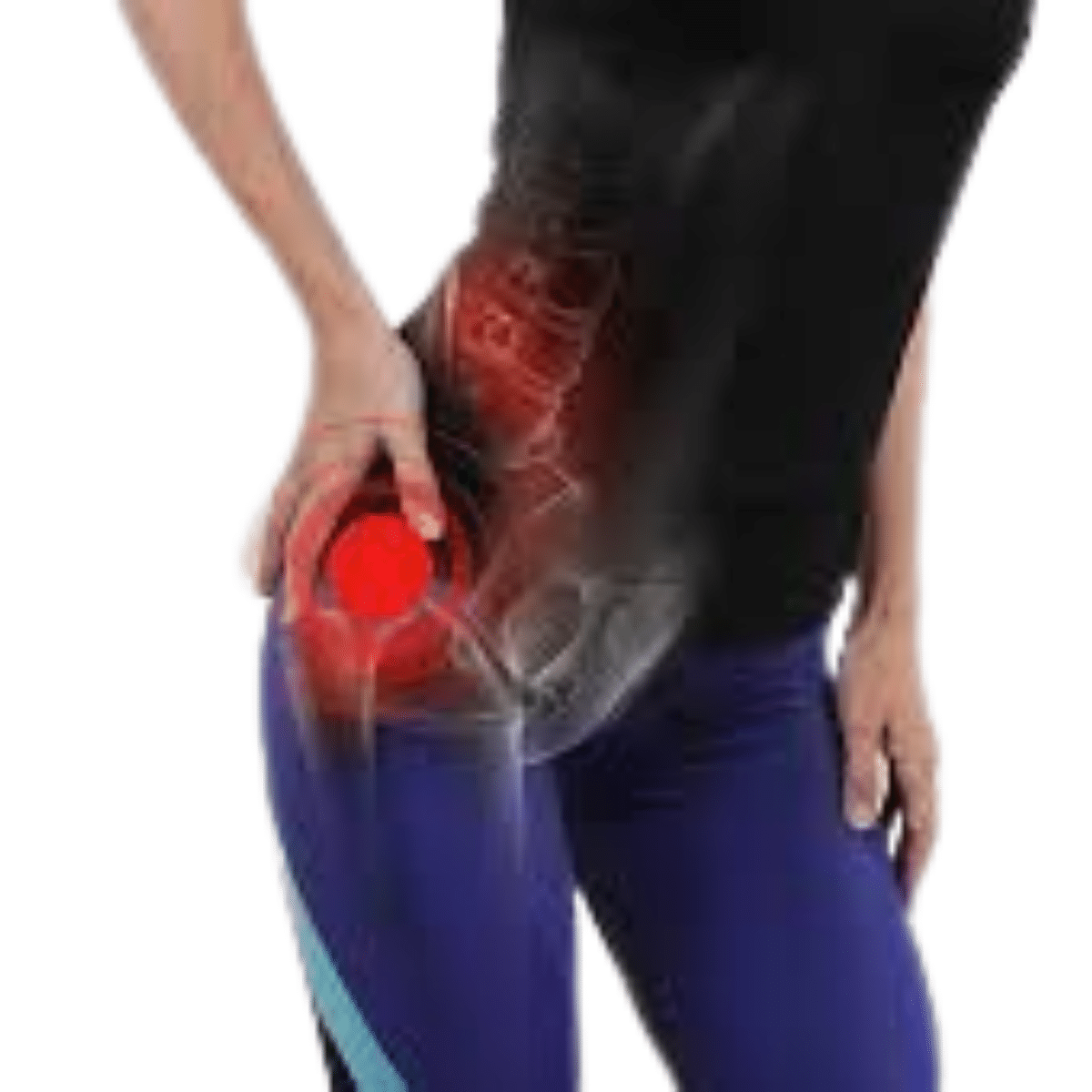FABER TEST or Patrick’s Test
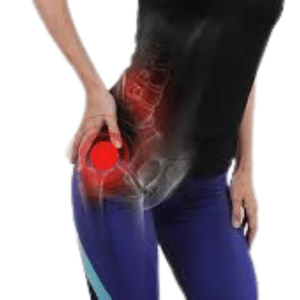
Hip and lower back pain can be debilitating and have a negative impact on a person’s quality of life. The Faber test is a common test used to diagnose hip and lower back pain. In this blog post, we will discuss the Faber test’s purpose, how to perform it, and the conditions that it can detect.
What is FABER Test?
It is also known as Patrick’s test or the Figure Four Test. The Faber test is a pain provocation test of the hip and sacroiliac joint, performed to evaluate the pathology of the hip joint or the sacroiliac joint. The acronym FABER stands for Flexion, ABduction, and External Rotation.
Main Purpose of Faber Test?
To Assess for the sacroiliac joint or hip joint is the source of the patient’s pain
Performing the Faber Test
Step-by-step guide on how to perform the test
Step 1
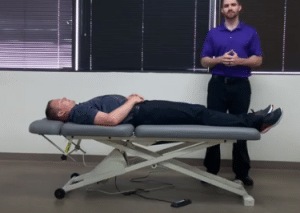
To perform the test, place the patient in the supine position
Step 2
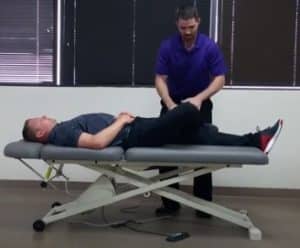
Cross the test leg over the knee of the opposite leg.
Step 3
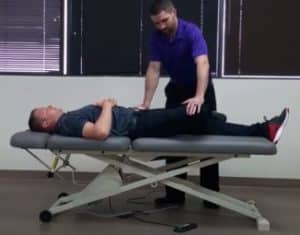
Make sure the ankle is free and is not supinating. The examiner then applies downward pressure on the bent leg while stabilizing the opposite hip.
Step 4
The test is repeated on the other leg
Step 5
The test is positive if the test leg remains above the opposite leg
What does a Positive Faber’s Test or Patrick’s Test Indicate?
A positive test result happens if the Pain on the ipsilateral side anteriorly is indicative of a hip joint disorder on the same side. Pain on the contralateral side posteriorly around the sacroiliac joint indicates pain mediated by dysfunction in that joint. A hip joint or hip flexor injury could potentially be indicated by pain throughout the exam.
Variations of the Faber Test
The Faber test has several variations, including the Faber-Thomas test, which involves the patient lying on their side with the leg being tested flexed and externally rotated.
Importance of Faber Test
The Faber test is an important diagnostic technique for determining hip and lower back pain. Early identification of hip joint arthritis, sacroiliac joint dysfunction, or lumbar spine dysfunction might aid in rapid treatment, perhaps avoiding consequences.
How the test can aid in diagnosing hip and lower back pain
The Faber test is an effective diagnostic tool for determining hip and lower back pain. It is a non-invasive test that can aid in the diagnosis of problems like hip joint arthritis, sacroiliac joint dysfunction, and lumbar spine dysfunction. A healthcare provider can detect the existence of pain and discomfort by completing the Faber test, which can aid in the diagnosis of the underlying cause of the symptoms.
Benefits of early detection
Early detection of conditions such as hip joint arthritis, sacroiliac joint dysfunction, and lumbar spine dysfunction can be advantageous in a variety of ways. Firstly, it allows for prompt treatment, which may prevent the progression of the condition and further complications. Early diagnosis and treatment can also help people better manage their pain and discomfort, resulting in a higher quality of life.
Furthermore, early detection of these illnesses can help to avoid the need for more painful procedures like surgery. Individuals may be able to control their symptoms with non-invasive therapies such as physical therapy or medication with early intervention, decreasing the need for more invasive surgical and costly procedures.
Conditions Detected by the Faber Test:
Hip Joint Arthritis: This condition is caused by the breakdown of cartilage in the hip joint, leading to stiffness, pain, and limited mobility.
Sacroiliac Joint Dysfunction: This condition occurs when the sacroiliac joint, which connects the spine to the pelvis, becomes inflamed or damaged, leading to pain and discomfort.
Lumbar Spine Dysfunction: This condition is caused by a problem with the lumbar spine, leading to pain, stiffness, and limited mobility.
Who Should Take the Faber Test?
Individuals experiencing hip and lower back pain should consider taking the Faber test. Athletes involved in sports that require running, jumping, or sudden changes in direction, such as basketball or football, are also at risk of hip and lower back pain and should consider taking the test.
Home Remedies and Exercise Suggestions That May Help Improve Hip Joint Mobility
Heat therapy: Applying a warm compress or taking a warm bath can help relax the muscles around the hip joint and alleviate pain.
Stretching exercises: Stretching can help increase hip joint flexibility and reduce pain. Some stretches that can be helpful include the butterfly stretch, the figure-four stretch, and the lunge stretch.
Strengthening exercises: Strengthening the muscles around the hip joint can help improve stability and prevent future injuries. Some exercises that can be helpful include hip bridges, clamshells, and side-lying leg lifts.
Low-impact exercises: Low-impact exercises such as swimming, cycling, or walking can help improve hip joint mobility without putting too much strain on the joint.
Rest and recovery: It is important to give your hip joint time to rest and recover, especially if you have been experiencing pain or discomfort. Avoid activities that aggravate your symptoms and try to get enough sleep and rest to promote healing.
Conclusion
The Faber test is a non-invasive diagnostic technique that can aid in the detection of hip and lower back discomfort. Early identification of hip joint arthritis, sacroiliac joint dysfunction, or lumbar spine dysfunction can aid in quick treatment and the avoidance of future consequences. People suffering from hip and lower back pain, as well as athletes participating in high-impact sports, may consider taking the Faber test to ensure early detection and treatment.
References:
- Martin HD, Shears SA, Johnson JC, Smathers AM, Palmer IJ. The hip joint: arthroscopic procedures and postoperative rehabilitation. J Orthop Sports Phys Ther. 2006 Aug;36(8):516-25. doi: 10.2519/jospt.2006.2140. PMID: 16948429.
2. Bharam S. Physical examination of the hip joint in the athlete. Clin Sports Med. 2006 Jan;25(1):119-27. doi: 10.1016/j.csm.2005.08.008. PMID: 16324970.
3. Malviya A, Stafford GH, Villar RN. Hip arthroscopy: evolution, current practice, and future developments. Int Orthop. 2010 Dec;34(8):1115-21. doi: 10.1007/s00264-010-0992-y. Epub 2010 Jul 3. PMID: 20596721; PMCID: PMC2999308.
4. Gupta A, Redmond JM, Hammarstedt JE, Petrakos AE, Domb BG. Accuracy of the flexion, adduction, and internal rotation test for detecting hip pathology. Arthroscopy. 2015 Mar;31(3):391-6. doi: 10.1016/j.arthro.2014.10.013. Epub 2014 Dec 11. PMID: 25500238.
5. Agricola R, Heijboer MP, Bierma-Zeinstra SM, Verhaar JA, Weinans H, Waarsing JH. Cam impingement causes osteoarthritis of the hip: a nationwide prospective cohort study (CHECK). Ann Rheum Dis. 2013 Jul;72(7): 1212-7. doi: 10.1136/annrheumdis-2012-201643. Epub 2012 Sep 17. PMID: 22986490.
6. Egol KA, Kubiak EN, Fulkerson E, Kummer FJ, Koval KJ. Biomechanics of the hip. In: Browner BD, Jupiter JB, Krettek C, Anderson PA, eds. Skeletal Trauma: Basic Science, Management, and Reconstruction. 5th ed. Philadelphia, PA: Elsevier Saunders; 2015:chap 52.
- Tips for Getting Better Sleep with Anxiety in 2024
- Split Renal Test: The Best Way to Diagnose Dangerous Kidney Problems in 2024
- Revolutionizing Treatment-Resistant Schizophrenia Solutions: Unleashing Hope in 2024
- Demystifying Obsessive-Compulsive Disorder in 2024: Understanding OCD from the Inside Out
- Unmasking the Mind: Can the DAP Test Truly Decode Your Mind in 2023?
